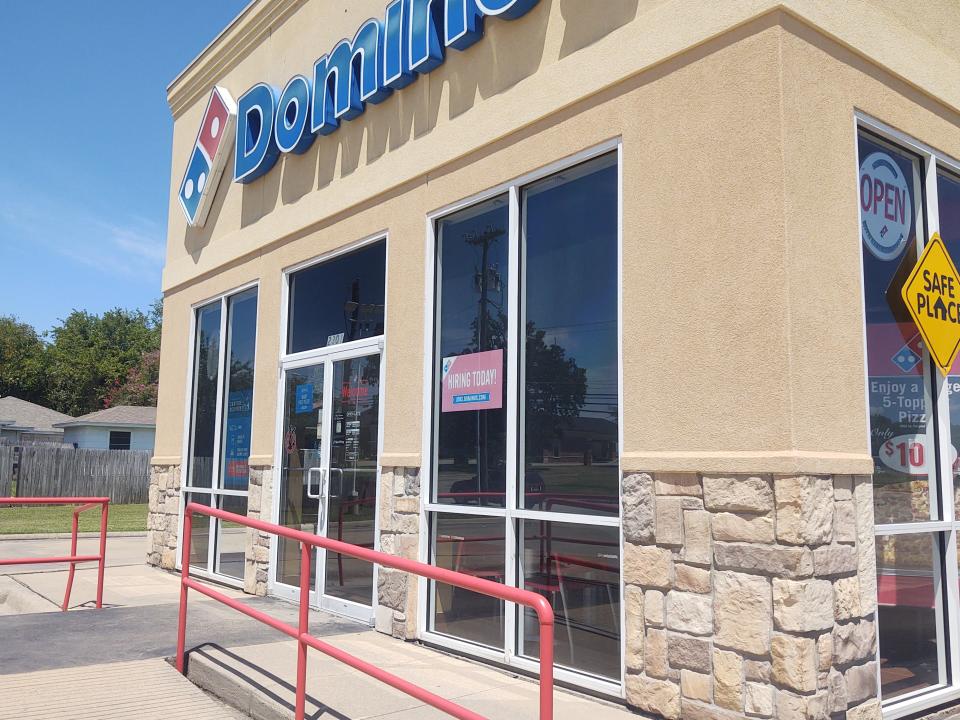Now Hiring: Service industry continues to struggle amid low local unemployment

Difficulties in finding workers to fill positions amid full employment and a return to pre-COVID unemployment levels is still affecting the local job market in Texoma.
Historically, economic developers have referred to 4 percent unemployment as the point where the vast majority of job seekers have found some level of employment. However, the effects on area employers appear sharper this time.
In the latest Texas Workforce Commission job report, the Sherman-Denison area unemployment dropped to 3.8 percent for November.
"When I say we are at full employment, to me that means that most people who want a job have a job," Workforce Solutions Texoma Executive Director Janie Bates said. "I still think we are at that point and that pretty much is where we are now."
Bates said the impact of the labor market can be felt across all industries, but those on the entry level, including the service and food industries are feeling the pinch the hardest.
November saw the unemployment rate drop slightly from 3.9 percent the month prior to 3.8 percent. Since the pandemic started, the rate hovered close to the 5 percent mark, but has recently dropped back to the near historic lows that were seen prior to the pandemic.
By comparison, the state and national unemployment rates also declined in November from 4.8 percent to 4.5 percent and 4.3 percent to 3.9 percent, respectively. These numbers are not adjusted for seasonal shifts, but when accounting for this the state level sits at about 5.2 percent.
While the shortage continues, Bates noted that the labor force has grown over the past year. Since November 2020, the number of workers in the labor market has gone up by 1,926 while the number of employed workers has gone up by nearly 2,800.
Area experts said there are a variety of factors at play that impact both the market and the difficulty some industries are seeing. Denison Development Alliance President Tony Kaai attributed it, in part, to the ongoing pandemic and the recent surge of the Omicron variant that has spiked cases in recent weeks.
'It is still a lack of employable people and it has gotten tighter in the last few weeks with some of my service industries," he said. "We are at full employment and now we've had this second surge with Omicron and people who are sick."
Another factor in play is a shift in the market toward higher paying industries. Many industrial employers had started to increase wages and benefits prior to the pandemic due to the low unemployment as a way of competing. With many of those employers still in high need of workers, many prospective workers have gone to these careers instead of the service industry.
"When you look at what is happening, most of our industries have upped their wages," Bates said. "Even the fast food places are paying $15 or $16 an hour. That wasn't the case a year ago."
"There is always going to be entry level workers," Kaai said. "The transition is that those jobs and salaries are going to have to go up to compete at that service level and employment level."

Beyond simply increasing wages, Bates said the workforce commission has offered some programs to help service industry employers retain employees. One of these programs includes child care incentives for workers. Under the program, workers in the service industry can sign up for a free year of childcare, which historically has been a barrier for some workers.
"We all know childcare is expensive and sometimes it means people can't go to work," she said.
Meanwhile, Kaai said he hopes that the market will return to some level of normality once the Omicron surge has ended.
"The market is tight and hopefully COVID will run its course again and people will be able to return to the job again," he said.
The unemployment update comes as the state returned to pre-covid levels for the total number of jobs in the state. November saw the state reach just under 13 million jobs, breaking the record set in February 2020 when there were 12.97 million jobs.
"Texas continues to reach unprecedented milestones thanks to our unwavering commitment to economic freedom and our young, skilled, growing, and diverse workforce," Gov. Greg Abbott said in a press release. "By reaching nearly 13 million jobs last month, Texas has surpassed our pre-pandemic employment levels — a remarkable achievement and testament to our welcoming business climate and strong workforce."
This article originally appeared on Herald Democrat: Now Hiring: Service industry continues to struggle amid low local unemployment

